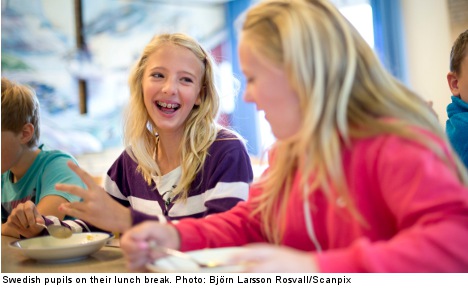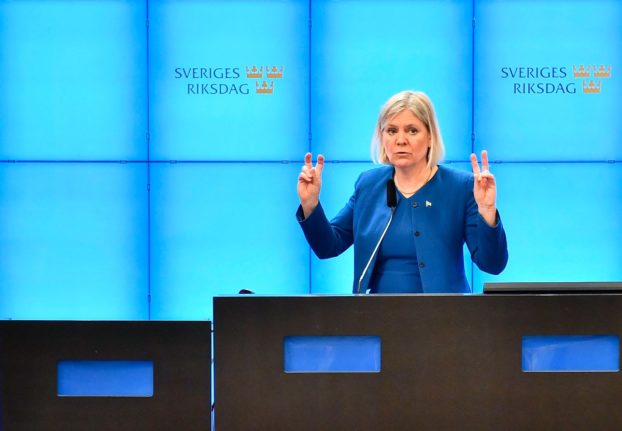About 10,000 Swedish students in grades four and eight took part in the two international studies that have been performed for the past 18 years.
Trends in International Mathematics and Science Study (Timss) measures students’ understanding of mathematics and natural sciences. In Sweden, a sample of students aged 14 and a younger group of 10-year-olds were tested.
The younger students also took part in the Progress in International Reading Literacy Study (Pirls) test that measures literacy.
“The fourth-graders’ results have become worse since 2006 but we are still over the EU/OECD avarage,” the Swedish Education Agency (Skolverket) said in a statement.
The statement also noted that the literacy of the older students in grade eight had slipped since the last test in 2007 and was below the EU/OECD average.
The older students were at the same level as in 2007 when it came to testing their understanding of the natural sciences, it noted.
Over the years, the most noteworty downward spiral has taken place in maths and sciences, said the TT news agency.
In the 2007 Timss test, Swedish students overall had fallen below the EU/OECD average.
Pirls and Timss are today considered the most relevant global comparison tools alongside the OECD’s Pisa (Programme for International Student Assessment) test. Politicians and teachers alike pay great attention to the results, which does not please all educators.
“Internationally, education policy has developed a very sharp results focus, which is connected to the perception that we are all competing on a global marketplace,” education specialist Professor Ulf P. Lundgren told TT.
“When the first Pisa study was published, the newspaper headlines in Germany seemed to imply a catastrophe was unfolding,” Lundgren said.
Lundgren thinks there are risks with paying too much heed to the international comparisons.
”The curricula will become more and more similar in order to do well in the international tests, and we don’t know what the future will bring so it might be a bad idea to root out education alternatives,” he said.
He also thinks that national education systems are all the more keen to hone their pupils’ skills at actually sitting exams, rather than focusing on learning based on each student’s needs.
“After Pisa was introduced we’ve seen tonnes of examples where tests at the national level have become more common,” he said.
“What we actually need is more leeway for teachers to do diagnostic testing that tells them which difficulties they need to help the student with.”
Lundgren is not optimistic that Sweden can break free from its dwindling results in the past few years, and cites increased segregation and the turmoil surrounding teacher training as two reasons.
“Unfortunately, I think we’ll keep on slipping. These factors won’t cease to have an influence and we need forceful investments to buck the trend,” he said.
TT/The Local/at



 Please whitelist us to continue reading.
Please whitelist us to continue reading.
Member comments